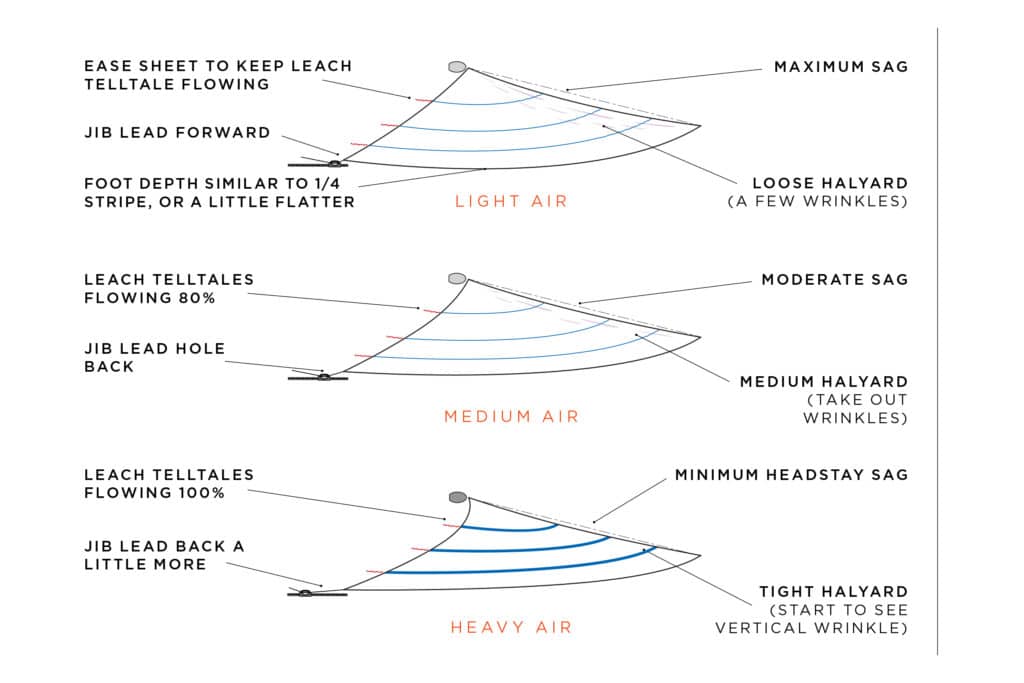
Use your class’s tuning guide to get in a good range for rake, shroud tension and lead position.
Use the leech telltales to determine sheet tension. In stable, underpowered conditions, you can stall the upper leech telltales as much as 30 percent of the time. As you get overpowered or the wind becomes unstable, the telltales must steadily flow all the time.
After the sheet, the most important variable is headstay sag. As you become overpowered, it is critical to reduce camber and twist the jib with a straighter headstay. Doing so can be even more important than achieving optimum mainsail shape, so sometimes the main has to be fuller than desired to achieve a tight enough headstay. A straighter mast gives straighter headstay.
AdvertisementAs a base jib-lead setting, get the foot of the jib to a depth similar to the lower 1/4 draft stripe, or a little bit flatter. It’s critical to get the base position correct on high-aspect jibs. Copy a fast guy to get it right.
Use the jib halyard to remove wrinkles from the luff. In overpowered conditions, a little more tension will keep the draft forward. When underpowered, you can have a few wrinkles.
Before each race, define a good range for the jibsheet — both maximum tightness and maximum looseness. Use marks on the sheet or another solid reference. Reproducibility is critical.
AdvertisementInhauling is an important variable that must be well understood on boats that allow it. Essentially, the load is shared between the two sheets, with the windward sheet pulling the clew forward and inboard. The degree of inhaul is also related to foot depth and twist. Make sure you have marks on the weather sheet as well, and keep an eye on the leech telltales. Often the jib lead has to be more aft when inhauling to compensate for the weather sheet pulling forward.
The primary control during a race is the sheet. If the boat feels fast and loose, trim tighter. If the boat is hard to sail, ease a little. In underpowered conditions, you’ll be able to trim tighter in the puffs, while overpowered conditions require you to ease the sheet in bigger puffs.
If you are not pointing well, the problem may not be the jib. You might have the main too flat or too loose, or you might be heeling too much.
Advertisement
Use the relative trim of the main and jib to get the right helm load. If you want more helm, try a tighter main and looser jib, and vice versa.
Make sure jib batten tension is correct, as too much tension can distort leech shape.
Read More: How To | Sail Trim









